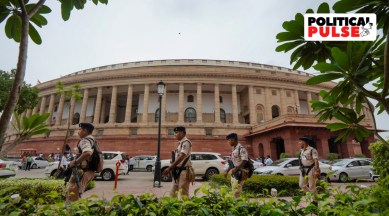With Modi set to face his second no-trust vote, a look at the history of no-confidence motions
To date, 28 no-confidence motions have been moved in the history of independent India; while Morarji Desai’s govt fell in 1979 after a vote — till now the only such instance — P V Narasimha Rao had two close calls during his tenure

The Lok Sabha on Wednesday accepted a no-confidence motion against the Narendra Modi government that was moved by the Congress to mount pressure over the Manipur issue. This will be the 28th no-confidence motion in independent India’s history. To date, the passing of only one of these motions led to the fall of a government (Morarji Desai-led administration in 1979).
In 1952, the Rules of the Lok Sabha provided that a no-confidence motion could be moved with the support of 30 MPs (the number now stands at 50). However, not a single no-confidence motion was moved during the term of the first two Lok Sabhas.
In 1963, during the third Lok Sabha, the first no-confidence motion was moved by Acharya J B Kripalani against the Jawaharlal Nehru government. The debate on the motion lasted 21 hours and over four days, with 40 MPs participating. In his reply, Nehru remarked, “A no-confidence motion aims at or should aim at removing the party in government and taking its place. It is clear in the present instance that there was no such expectation or hope. And so the debate, although it was interesting in many ways and, I think profitable too, was a little unreal. Personally, I have welcomed this motion and this debate. I have felt that it would be a good thing if we were to have periodical tests of this kind.”
The next no-confidence motion was moved roughly a year later in 1964 by N C Chatterjee, an Independent MP, against Prime Minister Lal Bahadur Shastri. This motion was debated for the longest time across all instances of discussions on the no-confidence motion: 24 hours.
While moving his motion, Chatterjee had said, “There is a crisis in every sphere. Honestly, there is a crisis in social, political, economic and other spheres and for all this I hold this government mainly responsible.”
Between 1964 and 1975, the Lok Sabha debated 15 no-confidence motions. Three were against Shastri and 12 against Indira Gandhi. Indira went on to face three more no-trust motions between 1981 and 1982. However, none of these was successful in dislodging a government. CPM MP Jyotirmayi Basu moved a no-confidence motion against Indira four consecutive times — in November 1973, May 1974, again two months later in July 74, and May 1975.
The first government to be dislodged
The first no-confidence motion that led to the fall of a government was moved by Y B Chavan of the Congress in 1979 against the government of Prime Minister Morarji Desai. After a nine-hour debate over two days, Desai resigned before the motion could be put to vote. Desai also saw a no-confidence a year before, in 1978, moved by CM Stephen of the Congress faction led by Indira.
Since then, every Prime Minister has been able to defeat a no-confidence motion. Rajiv Gandhi faced one in 1987 which he defeated by a simple voice vote because of his overwhelming majority in Lok Sabha. However, P V Narasimha Rao had two close calls during his term in the 10th Lok Sabha. The first motion against him was moved by Jaswant Singh, which he defeated by 46 votes. Rao did not face any trouble in defeating the second one, moved by Atal Bihari Vajpayee. The third no-confidence motion that Rao defeated with a margin of 14 votes was marred by controversy. Jharkhand Mukti Morcha MPs were taken to court for having accepted bribes to cast their vote to defeat the motion.
Before this, the last no-trust motion was in 2018, when then Andhra Pradesh Chief Minister Chandrababu Naidu’s Telugu Desam Party (TDP) quit the National Democratic Alliance (NDA) over the demand for special category status for his state.
After a 12-hour debate in that year’s Monsoon Session, on July 20, the Modi government defeated the no-confidence motion in the Lok Sabha by 199 votes. While 126 members supported the motion, 325 MPs rejected it. The day-long session in the Lower House saw the government and the Opposition trade charges and a moment of drama when Congress president Rahul Gandhi, after a blistering speech, walked over to Modi and embraced him.
Terming the no-trust vote against his government the result of the Opposition’s “arrogance”, Modi earlier called on all parties to dismiss the move and accused the Congress of working with the mindset of “Modi hatao (remove Modi)”. Responding to the debate on the motion, he said some people were indulging in “negative politics.” He also took a dig at Rahul for asking him to stand up for a hug after walking across to his chair in the Lok Sabha, saying the then Congress president appeared to be in a hurry to occupy his seat.
“Only the electorate of the country can decide his fate and make him sit on his chair,” Modi said, before asking, “What is the hurry?” Gandhi was present in the House when the Prime Minister made the statement.
Before that, in 2003, Prime Minister Vajpayee defeated a no-confidence motion moved by Sonia Gandhi.